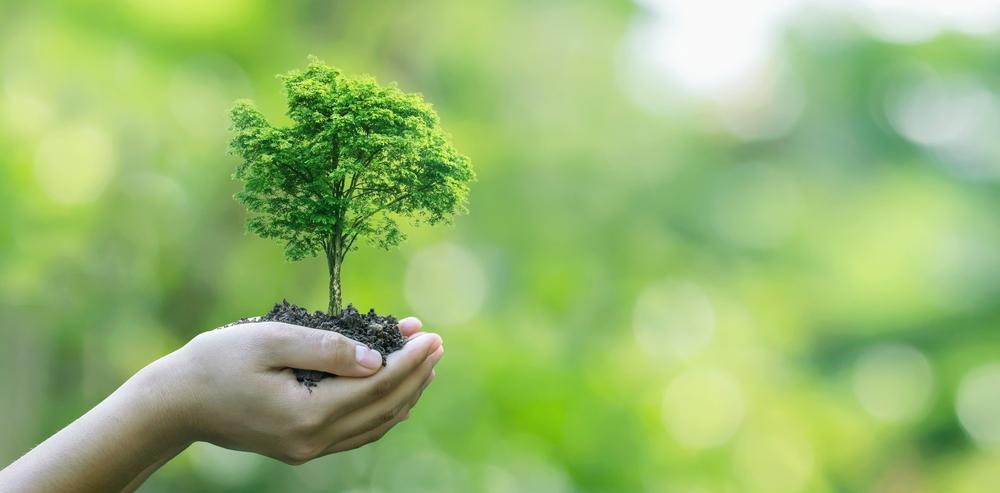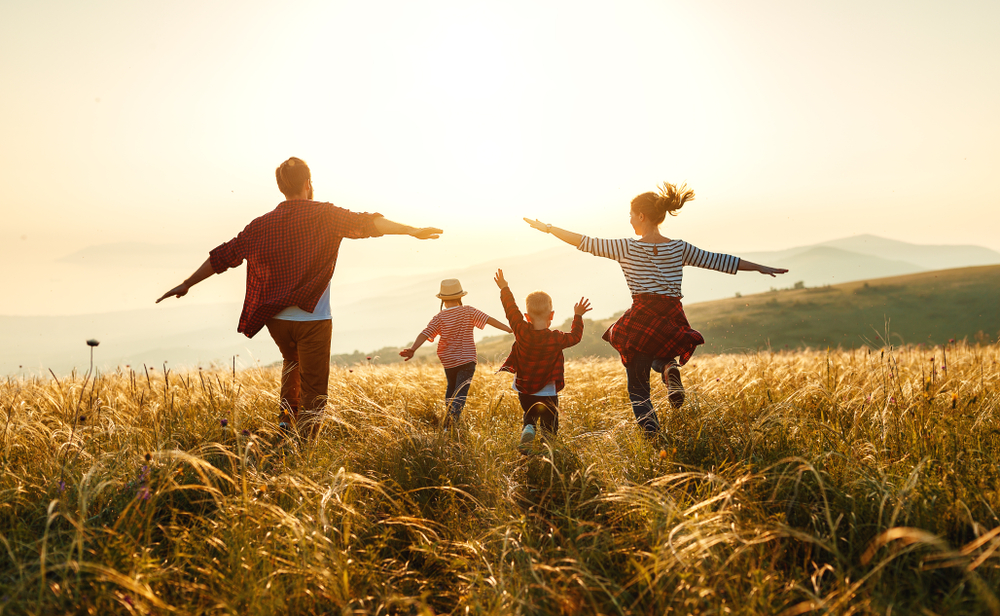Human Connection to Nature Has Declined 60% in 200 Years, Study Finds

Two hundred years ago, a child’s world was stitched together with the rustle of leaves, the shimmer of a river at sunrise, and the scent of blossom carried on the wind. Today, for many of us, that world has faded into background noise replaced by the hum of traffic and the glow of screens.
Researchers have found that our connection to nature has plummeted by more than 60% since the 1800s, a loss so profound it has a name: the extinction of experience. In Sheffield, England, the average person spends just 4 minutes and 36 seconds in natural spaces each day less time than it takes to brew a cup of tea.
This isn’t just a shift in how we spend our hours; it’s a slow erosion of something deeper a bond that shapes our mental well-being, our cultural identity, and our will to protect the world that sustains us. If the songs of birds, the feel of bark under your palm, or the smell of fresh rain vanished from daily life… would we even notice in time?
What the Research Reveals
The decline in our connection to nature isn’t guesswork it’s measured, mapped, and modeled across more than two centuries. Led by Professor Miles Richardson of the University of Derby, researchers built an advanced agent-based model that drew on historical urbanisation data, biodiversity loss records, and cultural indicators. One of the most striking cultural markers came from the world of language itself: an analysis of books from 1800 to 2020 showed a steep drop in the use of everyday nature words like river, moss, blossom, and meadow. At its lowest point in 1990, this decline reached 60.6%, mirroring the real-world loss of contact with the natural world.
But the model didn’t stop at word counts. It simulated how people’s “opportunity” to experience nature shaped by their surroundings interacts with their “orientation” toward nature, the internal disposition that makes us notice and value it. Both are crucial. You could live next to a park and still feel disconnected if you’ve never learned to engage with it. That orientation, the study found, is often passed from parent to child, making intergenerational transmission one of the most powerful forces in sustaining or eroding our bond with nature.
The results revealed a sobering truth: the extinction of experience is not only about physical absence from green spaces. It’s also a cultural and familial pattern, where parents who feel disconnected from nature are less likely to foster that bond in their children. Over time, this creates a feedback loop each generation starting further from the wild than the one before. Without major interventions, the model predicts this decline will continue well into the next century, risking a permanent break in humanity’s relationship with the living world.
The Drivers of Disconnection

The 60% drop in nature connectedness over the past two centuries didn’t happen by accident it’s the result of several intertwined forces reshaping how we live, speak, and pass on our values.
1. Urbanisation and Habitat Loss
In 1810, only about 7% of the world’s population lived in urban areas. Today, that figure exceeds 80%, with cities sprawling into former forests, wetlands, and fields. This expansion doesn’t just remove nature physically; it fragments it, leaving smaller, less biodiverse green spaces. The model used in the study shows that when urban greenspace availability dips below roughly 23%, a tipping point emerges where disconnection accelerates and becomes harder to reverse.
2. Cultural Shifts in Language and Storytelling
Our cultural mirrors books, songs, films now feature fewer references to everyday natural elements. Words like blossom, stream, or meadow have quietly slipped from common usage, replaced by urban-centric language. This loss in language reflects, and reinforces, the absence of nature in daily life. When we stop naming the wild things around us, they fade not just from our vocabulary, but from our awareness.

3. Technology and Lifestyle Changes
For much of human history, work, play, and travel happened outdoors. Now, the average person in developed nations spends more than 90% of their time indoors or in vehicles. Smartphones, streaming entertainment, and the pressure of long working hours have shifted leisure into indoor, screen-based activities. Even in cities with parks, “time poverty” the feeling of having no spare time can keep people away from them.
4. The Power of Parental Influence
Perhaps the most surprising driver is also the most intimate: parental nature connectedness. The research found it to be the strongest predictor of whether a child will grow up close to nature. Parents who rarely spend time outdoors or notice the natural world pass along that low orientation to their children, creating a generational echo of disconnection. Once this cycle sets in, even increasing the number of parks or green roofs won’t fully close the gap because the habit of engaging with nature isn’t there to begin with.
Why It Matters for People and Planet

The decline in our connection to nature isn’t just a nostalgic loss it’s a direct threat to both human well-being and the health of the planet. When the threads binding people to the natural world weaken, so too does our willingness and even our capacity to protect it.
Mental and Physical Health
Countless studies have linked time in nature with lower stress, improved mood, sharper cognition, and even reduced risk of chronic disease. Yet, as the Sheffield data shows, some people spend less than five minutes a day in natural spaces. This isn’t long enough to reap the benefits. Nature connectedness amplifies these effects people who feel a deep bond with nature experience greater mental health gains from the same amount of outdoor time compared to those who feel disconnected. Without that bond, green spaces become background scenery rather than a source of restoration.
Environmental Stewardship
There’s a simple truth: people are far more likely to protect what they feel connected to. The research underscores that declining nature connectedness is a root cause of the environmental crisis. As orientation toward nature diminishes, so does the motivation to address biodiversity loss, climate change, or habitat destruction. This erosion of care has global consequences fewer voices speaking up, fewer hands working to restore ecosystems, fewer voters supporting pro-environment policies.
Economic Implications
Nature’s contributions to human society clean air, water filtration, pollination, climate regulation are often called “ecosystem services,” and they’re worth trillions annually. As nature is degraded and undervalued, these benefits shrink, driving up economic costs in agriculture, healthcare, and disaster mitigation. Boston Consulting Group estimates biodiversity loss already costs the global economy over $5 trillion each year. When we lose our personal and cultural connection to nature, we also lose the urgency to invest in protecting these invisible but essential systems.
The Cultural and Generational Dimension
Perhaps most insidious is how the disconnection becomes embedded in culture. Each generation inherits a “normal” that is slightly more urbanised, more indoors, and more detached from the rhythms of the natural world. Without deliberate intervention, this shifting baseline risks producing generations for whom the absence of birdsong, starry skies, or wildflowers isn’t a loss it’s simply life as they know it.
What the Future Holds if Nothing Changes

The study’s modelling predicts a future where the extinction of experience becomes a closed loop: fewer green spaces in our daily lives mean less opportunity to notice or care about nature. That lowered orientation is passed on to children, who grow up valuing it even less. Even well-intentioned efforts like occasional outdoor campaigns or adding small urban parks won’t reverse the trend they may boost individual well-being in the short term, but the systemic decline marches on
One of the most unsettling findings is the existence of tipping points. When urban greenspace availability drops below around 23%, the decline accelerates sharply and resists reversal. With many urbanised regions already far below this threshold Sheffield’s daily average of just over four minutes in nature is one telling example the model warns of a locked-in disconnection that spans generations. This isn’t a slow fade; it’s a downward slope that gets steeper over time.
Even if bold, large-scale interventions were implemented such as making cities ten times greener or embedding nature deeply into early childhood experiences the model shows recovery taking decades. Because intergenerational transmission plays such a powerful role, improvements in access or awareness today might not yield significant gains until well after 2050. The same feedback loop that speeds up decline can, if reversed, create a self-sustaining recovery but only if we act soon enough to set that cycle in motion.
Delay doesn’t just mean more disconnection; it also risks losing the cultural memory and lived skills needed to engage with nature meaningfully. Once those are gone, even restored ecosystems may stand empty of human presence, visited but not truly experienced. In that scenario, we don’t just lose our health benefits and ecological guardianship we lose an essential part of what it means to be human.
Pathways to Reconnection

The picture painted by the research may be sobering, but it is far from hopeless. The same forces that have driven our disconnection from nature urban design, cultural transmission, education can also be turned into levers for reconnection. The key is acting with scale, intention, and persistence.
1. Start Early: Nurturing Connection in Childhood
The study makes it clear: early-life experiences with nature are among the strongest predictors of lifelong connection. Forest schools, nature-based nurseries, and outdoor learning programs don’t just give children a break from classrooms they weave nature into the fabric of their development. This is where the generational cycle can be broken. When parents are engaged alongside their children, that orientation toward nature has a better chance of becoming a family legacy.
2. Radical Urban Greening
Adding a few more city parks won’t cut it. The modelling suggests we may need to make urban areas ten times greener to reverse the decline. That means rethinking urban design from tree-lined streets and green roofs to interconnected green corridors that allow both people and wildlife to move freely through cities. These spaces must be biodiverse and accessible, so they invite daily engagement, not just occasional visits.
3. Cultural Reweaving
Nature connection isn’t only about what’s outside our doors; it’s also about the stories, symbols, and language we carry. Reviving nature in books, art, music, and media helps make it present in our shared imagination again. The uptick in nature words in recent decades after the steep 1990 low hints at a cultural appetite for reconnection. The more we name and notice the natural world, the harder it is for it to disappear from our lives unnoticed.

4. Integrating Nature into Health and Policy
Healthcare providers are already experimenting with “nature prescriptions” encouraging patients to spend time outdoors for mental and physical health. Embedding these practices into public health policy, education systems, and workplace wellness programs could scale their impact dramatically. The IPBES Transformative Change Assessment has already identified nature connectedness as a core strategy for global sustainability; the challenge now is making it a political and funding priority.
5. Building Community and Family Engagement
The research highlights intergenerational transmission as the most powerful driver of nature connection for better or worse. Programs that engage families together, community-led rewilding projects, and neighbourhood nature activities can create social norms around being outdoors. In doing so, they not only reconnect individuals but rebuild a collective identity rooted in the natural world.
The scale of change needed may sound daunting, but as Professor Richardson points out, our baseline is now so low that even seemingly modest shifts like increasing daily outdoor time from 5 minutes to 40 could have transformative effects. With the right mix of personal commitment and systemic change, the downward spiral can become an upward one, carrying both people and the planet toward a healthier, more resilient future.
A Future Worth Growing Into
The story of our disconnection from nature is not set in stone it’s still being written, and every choice we make adds a line. The research is clear: without deliberate change, we risk passing down a world where the songs of birds, the scent of wildflowers, and the wonder of star-filled skies are no longer part of our shared human experience. But it’s equally clear that this decline can be reversed.
We don’t have to wait for governments to act, though their role is critical. We can start today stepping outside, not just to “get fresh air,” but to truly notice, name, and appreciate what we find. We can bring children into wild spaces and let them lead us in curiosity. We can choose to green our streets, our workplaces, and our language.
Change begins when we remember that we are not separate from nature, but part of it. Every moment we spend strengthening that bond is an act of restoration for ourselves, our communities, and the living world that sustains us. If the last 200 years have taught us how to disconnect, the next 20 can teach us how to belong again. The question is whether we will take that chance.
Loading...

